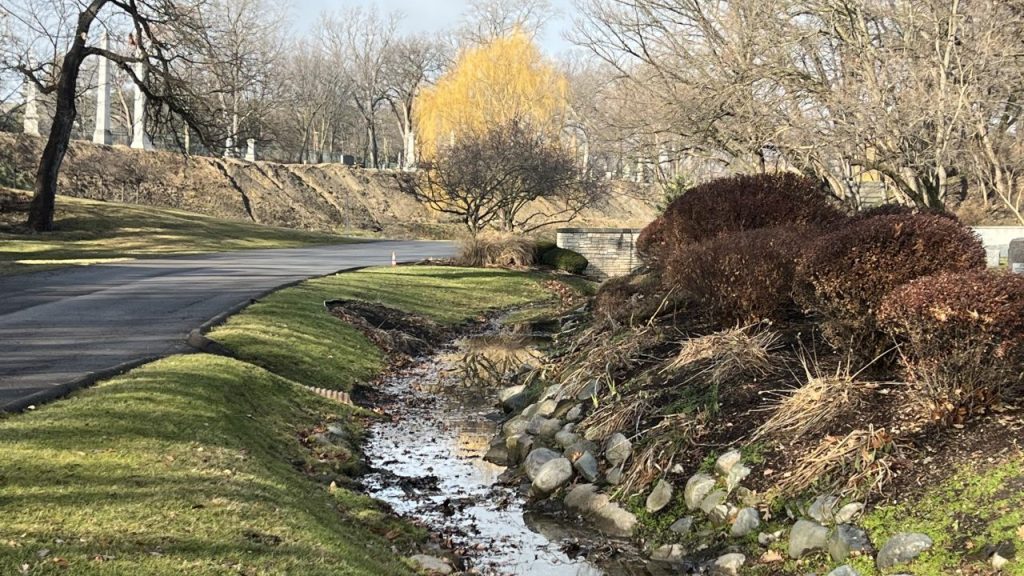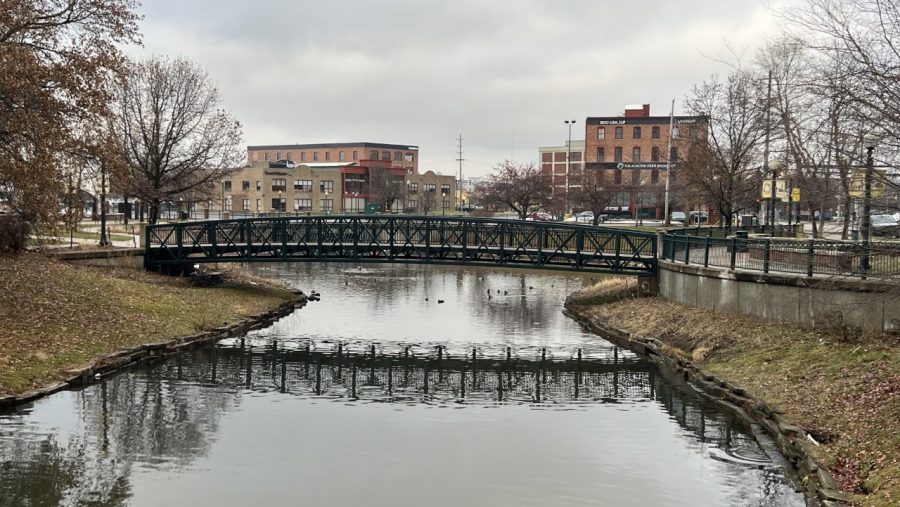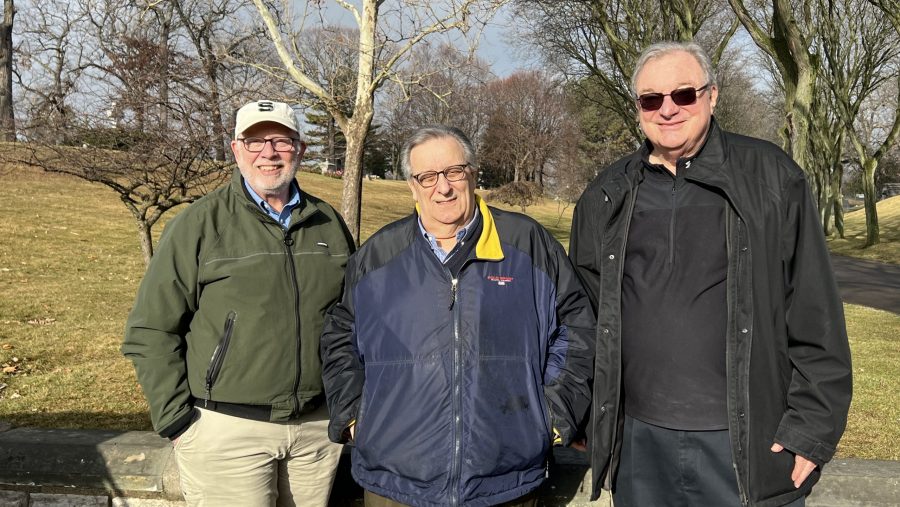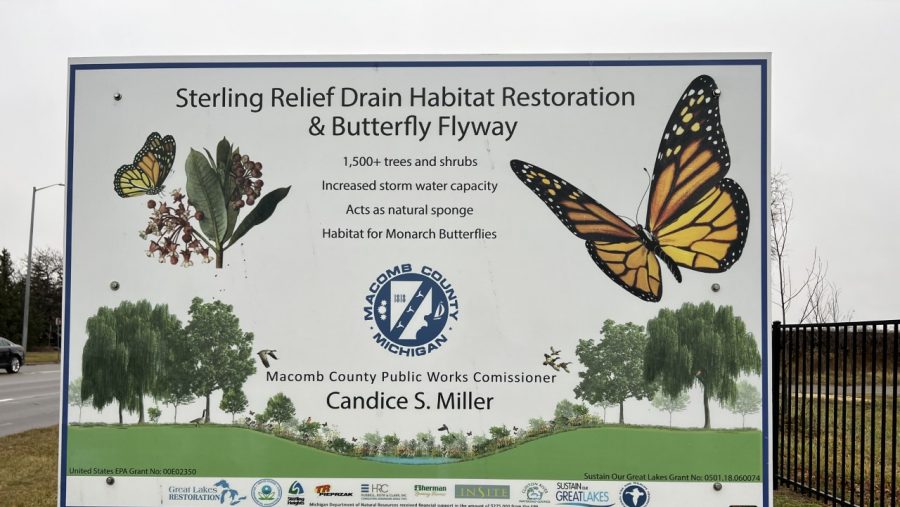CuriosiD: Could Detroit’s buried streams see the light of day?
Pat Batcheller February 9, 2023Pat Batcheller uncovers the truth about Detroit’s potential stormwater streams.

The last open section of Bloody Run flows through Elmwood Cemetery
WDET’s CuriosiD series answers your questions about everything Detroit. Subscribe to CuriosiD on ApplePodcasts, Spotify, NPR.org or wherever you get your podcasts.
In this episode of CuriosiD, listener Bill McGraw of Dearborn asks…
“There’s been talk in Detroit and certainly elsewhere in the country over the last few years about daylighting buried streams. There are a lot of buried streams under Detroit, and I’m curious if there’s any daylighting going on in Detroit.”
The short answer
Some of the water flowing through Detroit’s sewers were part of creeks that spread across the city when it was mostly farmland. When a creek flows into a sewer, and that sewer is opened, that’s called “daylighting.” Architects say daylighting can relieve urban flooding and promote economic development.
A tiny stream inspired a big idea
This story begins at Detroit’s historic Elmwood Cemetery. Some of the city’s most historic figures are buried or enshrined here, including former Mayor Coleman A. Young and former Michigan Governor Lewis Cass. On the west side of the graveyard, a small stream runs between two open-ended sewer pipes about a quarter of a mile apart. This stream is all that’s left of Bloody Run, named for a deadly battle between Chief Pontiac and British troops at Fort Detroit in 1763.
Back then, Bloody Run flowed across miles of farmland to the Detroit River. After the Civil War, the city’s population swelled as factories replaced farms. The city installed sewers, which sometimes overflowed during heavy rains, contaminating the creek. After a cholera outbreak in 1880, the city diverted the flow of Bloody Run into the sewer system, effectively burying the creek.
In 2010, architect Steve Vogel and his firm approached city officials about daylighting Bloody Run.
“If you put a creek in a sewer, and you open up the sewer, you’re daylighting,” Vogel says.
One reason Vogel wanted to daylight Bloody Run is to reduce flooding in the city. He says the project would have created a new, natural drainage system that would have kept about 3 billion gallons of extra water out of Detroit’s sewers.
“The sewers are very old,” Vogel says. “80% of sewers are stormwater when they’re combined, so if you eliminated the stormwater, you can build much smaller sewers.”
Kalamazoo shows how it’s done

Another reason why architects wanted to daylight Bloody Run was to boost economic development. Vogel says their plan was based on a successful daylighting project along Arcadia Creek in Kalamazoo, Mich.
“They had that huge problem every spring, their downtown businesses’ basements would flood,” he says.
Dave Schervish worked with Vogel on the Arcadia Creek project. Schervish says they saw the potential to attract new development in downtown Kalamazoo.
“If designed properly, you could leverage off of the creek as an amenity to encourage economic development, housing, retail, office and so forth,” Schervish says.
The Arcadia Creek project not only helped reduce flooding, but it also spurred new investment and construction, including apartments, a museum, a community college campus and a festival plaza that hosts concerts and other events.
Daylighting is easier said than done
By daylighting Bloody Run, the architects at Vogel’s firm wanted to follow as much of the creek’s original footprint as they could. But that path is mostly buried underneath buildings and streets now. Rather than tear that all out, Schervish says they were planning to dig new canals starting near General Motors’ Factory Zero in Hamtramck.
“They (GM) have two retention basins for stormwater coming off the roofs in the parking lot there,” Schervish says. “And so we started to get the idea that maybe we should tap into some of that water.”

Vogel says the new canals would have wound their way through Eastern Market and along the Dequindre Cut out to the Detroit River.
“It’s the path of least resistance,” he says. “We’re not fooling around with any buildings.”
Detroit has a lot of potential for daylighting
Other cities have done daylighting, including San Francisco, Vancouver, Zurich and Seoul, to name a few.
As for Detroit, though, Vogel isn’t the only urban planner to see daylighting potential. Lars Graebner is a principal at VolumeOne Design Studio. He says there are many places in Detroit that are fertile ground for daylighting.
“Detroit is in an absolutely fantastic condition at the moment having these advantages of lots of vacant land, which not every city has,” he says.
Graebner created a map of Detroit showing the original locations of rivers and creeks like Bloody Run that were buried or lost over time. He says daylighting some of those areas would replenish groundwater and improve neighborhoods near vacant land.
“If you have a well-designed or natural stream or wetlands adjacent to it, you could increase the value of the properties quite dramatically,” Graebner says.
Daylighting is expensive…
Bloody Run’s price tag in 2010 when Vogel’s firm was pushing for it was estimated at $1 billion. The city didn’t have that kind of money and filed for bankruptcy in 2013.
Today, the Detroit Water and Sewerage Department says it’s not pursuing any daylighting projects due to the potential costs and scope. Instead, Spokesman Brian Peckinpaugh says DWSD is designing relief sewers and green stormwater infrastructure to reduce flooding.
…but it can be done
Outside of Detroit, the Great Lakes Water Authority leaves daylighting decisions to local governments and drain commissioners. In Macomb County, that falls to Public Works Commissioner Candice Miller.
Like Detroit, Macomb County has long had problems with sewers overflowing after heavy rain. Using federal grants, Miller says the county daylighted a 2.5-mile section of the Sterling Relief Drain, which runs between 15 Mile and 16 Mile roads in Sterling Heights. Crews tore out large pipes and replaced them with natural features such as trees, grass and native plants to absorb stormwater.
“You don’t see a drop (of rainwater) in this drain because everything has filtrated into this soil here, Mother Nature acting as a natural sponge,” Miller says.
Miller says it’s also providing a habitat for monarch butterflies.

Bloody Run could still happen
A daylighting project of this size is not in Detroit’s immediate plans. But those who want to unearth Bloody Run say it’s still a viable project. They hope the money is there someday to save at least one creek from its buried past.
Meet the listener

Bill McGraw lives in Dearborn. He’s been a journalist in Metro Detroit for many years. He wanted to know more about daylighting because he’s, well, curious.
“I’ve always been interested in urban geography. And the more I learned about it, the more I saw that it was going on elsewhere in the country.”
We want to hear from you!
Have a general question about Detroit? Ask us here or fill out the form below.
More from CuriosiD:
- Why does steam come out of Detroit’s streets?
- Are the woods in Palmer Park a virgin forest?
- We answered all your questions about the Mile Road system
Support the podcasts you love.
One-of-a-kind podcasts from WDET bring you engaging conversations, news you need to know and stories you love to hear.
Keep the conversations coming. Please make a gift today.
